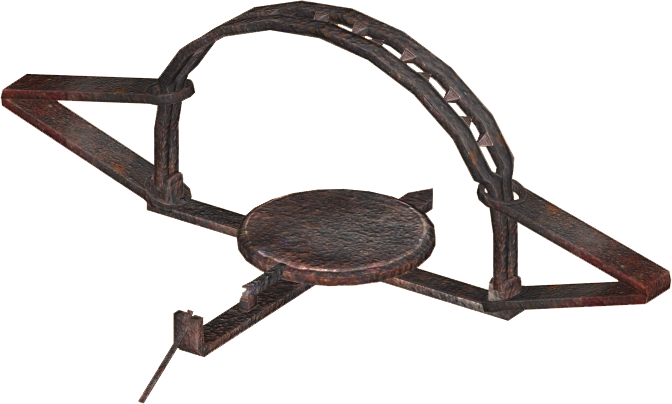
This image has format transparent PNG with resolution 672x404.
You can download this image in best resolution from this page and use it for design and web design.
Bear trap PNG with transparent background you can download for free, just click on download button.
Body-gripping traps are designed to kill animals quickly. They are often called "Conibear" traps after Canadian inventor Frank Conibear who began their manufacture in the late 1950s as the Victor-Conibear trap. Many trappers consider these traps to be one of the best trapping innovations of the 20th century; when they work as intended, animals that are caught squarely on the neck are killed quickly, and are therefore not left to suffer or given a chance to escape.
The general category of body-gripping traps may include snap-type mouse and rat traps, but the term is more often used to refer to the larger, all-steel traps that are used to catch fur-bearing animals. These larger traps are made from bent round steel bars. These traps come in several sizes including model #110 or #120 at about 5 by 5 inches (130 by 130 mm) for muskrat and mink, model #220 at about 7 by 7 inches (180 by 180 mm) for raccoon and possum, and model #330 at about 10 by 10 inches (250 by 250 mm) for beaver and otter.
An animal may be lured into a body-gripping trap with bait, or the trap may be placed on an animal path to catch the animal as it passes. In any case, it is important that the animal is guided into the correct position before the trap is triggered. The standard trigger is a pair of wires that extend between the jaws of the set trap. The wires may be bent into various shapes, depending on the size and behavior of the target animal. Modified triggers include pans and bait sticks. The trap is designed to close on the neck and/or torso of an animal. When it closes on the neck, it closes the trachea and the blood vessels to the brain, and often fractures the spinal column; the animal loses consciousness within a few seconds and dies soon thereafter. If it closes on the foot, leg, snout, or other part of an animal, the results are less predictable.
Trapping ethics call for precautions to avoid the accidental killing of non-target species (including domestic animals and people) by body-gripping traps.
Note on terminology: the term "body-gripping trap" (and its variations including "body gripping", "body-grip", "body grip", etc.) is often used by animal-protection advocates to describe any trap that restrains an animal by holding onto any part of its body. In this sense, the term is defined to include foothold/foothold traps, Conibear-type traps, snares, and cable restraints; it does not include cage traps or box traps that restrain animals solely by containing them inside the cages or boxes without exerting pressure on the animals; it generally does not include suitcase-type traps that restrain animals by containing them inside the cages under pressure.
In this page you can download free PNG images: Bear trap PNG images free download